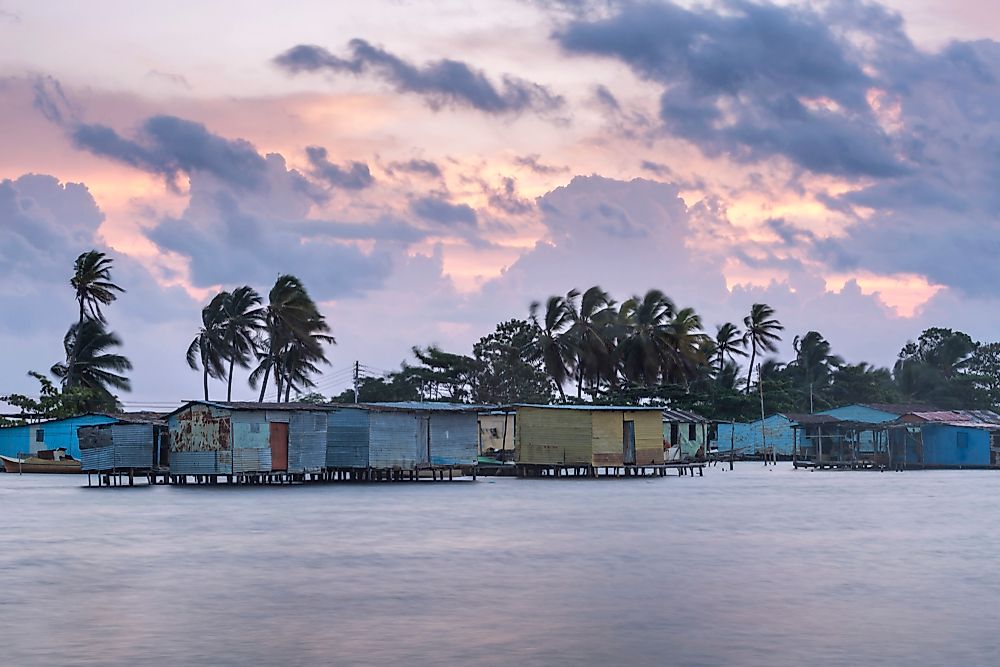How Did Venezula Get Its Name?

Venezuela is a sovereign state on the northern parts of South America. Venezuela is made up of a continental landmass and numerous small islets and island in the Caribbean Sea. The country occupies an area of about 353,841sq miles. Its continental territory is surrounded by the Atlantic Ocean, Caribbean Sea, Guyana, Trinidad and Tobago, Brazil, and Colombia. The country’s terrain ranges from the Amazon basin rainforest to the Andes Mountains through the River Orinoco Delta, the Caribbean coast, and the extensive ilanos plain. It is thought that Venezuela acquired its name from the city of Venice in Italy.
Naming of Venezuela
Venezuela was named by an Italian cartographer and navigator, Vespucci Amengo of Venice who arrived on the Venezuelan coast on an expedition under Alonso Ojeda in 1499. The stilt homes in the region around Maracaibo lake reminded Amengo of Venice, Italy, therefore, he named the place "Little Venice" or Veneziola which translates to Venezuela in Spanish. Another member of the expedition named Martin Enciso gave a different story in his book (Summa-de-Geografia) Martin claims that they found an indigenous group in the area called the Veneciuela. Therefore, the name of the country might have evolved from the name Veneciuela.
History of Venezuela
Spanish colonization of Venezuela began in 1522 when they established their first permanent settlement in the present-day Cumana city. Numerous native leaders like Tamanaco and Guaicaipuro tried resisting the Spanish incursion, but they were subdued. Tamanaco was sentenced to death by Diego de Losada, the founder of Caracas. The initial colonization focused on the northern coast, but during the mid-eighteenth century, they started pushing inland along River Orinoco.
After numerous futile uprisings, the country declared its independence under Francisco de Miranda on July 5, 1811, and started the Venezuelan independence war. The first republic was crushed by an earthquake which hit the city in 1812 and the rebellion of the Llaneros. Venezuela gained their sovereignty after Simon Bolivar won the Carabobo battle on June 24, 1821. Rafael Urdaneta and Jose Padilla’s victory in the Lake Maracaibo battle on July 24, 1823, helped seal their independence. The New Granada’s congress helped liberate numerous South American nations and established the Gran Colombia. Venezuela was part of Gran Colombia until Paez led a rebellion in 1830 which resulted in their independence.
States and Regions
Venezuela is split into a capital district and twenty-three states. It is divided further into 335 municipalities which are subdivided into over a thousand parroquias (parishes). The Venezuelan states were grouped into nine administrative areas by a presidential decree of 1969. Venezuela can be split into ten geographical regions with some corresponding to the biogeographical and climatic areas like the Coro and Venezuelan Andes region.
Demography
Venezuela is one of the most urbanized nations in Latin America with most of their citizens living in cities like Caracas. Over 93% of the locals live in the cities in northern Venezuela. The country has a population of over 31,028,337 people. Majority of the Venezuelans are of mixed ethnic ancestry known as mestizo. According to the 2011 census, the two major ethnic groups in the country were the mestizo (51.6%) and the whites (43.6%). Some of the minority groups in the country include the Afro-descendants and the blacks.











